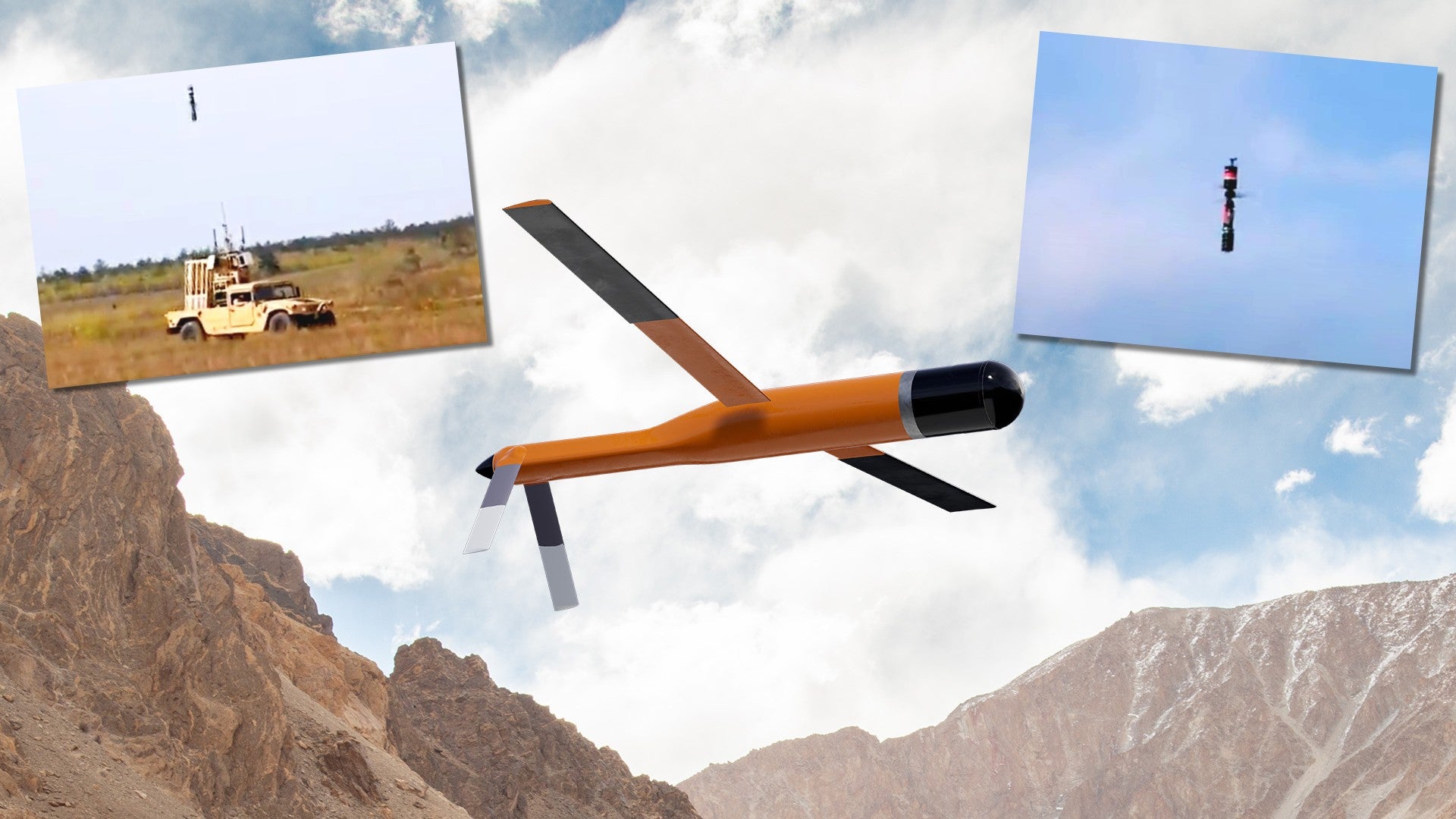DARPA announced this week that it had successfully demonstrated its new Mobile Force Protection (MFP) system, which can launch semi-autonomous interceptors that shoot kinetic “streamers” at enemy drones in order to clog their propellers or rotors and bring them to the ground. In addition, DARPA’s announcement stated that “other non-kinetic techniques were developed and demoed.” To find out more about the MFP anti-drone system and what these other techniques were, The War Zone spoke with Dr. Greg Avicola of DARPA’s Tactical Technology Office, who serves as Program Manager for the Mobile Force Protection program. Avicola revealed previously unreleased details about the MFP system, including the fact that it has been demonstrated using Lockheed Martin’s MORFIUS, another counter-drone interceptor that uses a high-power microwave directed energy weapon to defeat drone swarms.
After our initial report on MFP, we still had additional questions, including about just how autonomous the nature of the anti-drone system is. While some of those details still cannot be shared, Avicola said there’s a human operator in the loop to provide guidance to the system overall, but the goal is to design a system that can handle a large number of incoming drone threats at once.
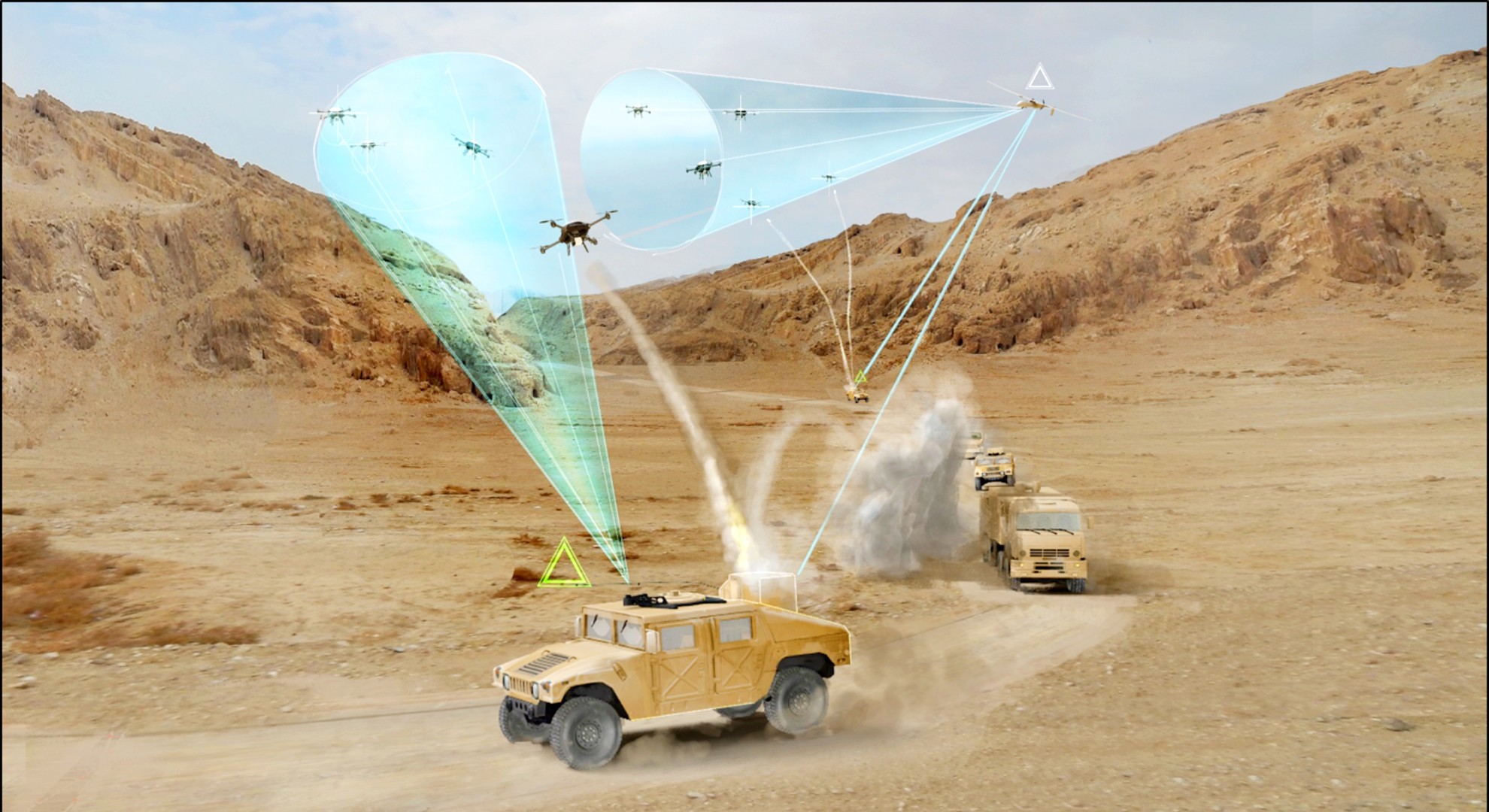
“For that, you need some level of autonomy to sort out everything it’s looking at and make recommendations on what to engage and how fast to engage them” Avicola told us.
To accomplish this, the system uses a DARPA-developed “decision engine” to classify potential threats, form a “local engagement picture” of the surrounding airspace, and then make recommendations to the human operator about deploying its interceptors. “It’s been trained to look at sensor data and ascertain based upon the characteristics of what it’s seeing what it thinks things are and what the probability is of various things are being drones or not drones and then provide recommendations to the operator.”
While Avicola couldn’t share specific details about what that decision engine entails, artificial intelligence (AI) and machine learning are usually associated with this kind of terminology, and DARPA has built similar systems leveraging those technologies in the past.
Avicola told us that the demonstration system possessed six interceptor launch tubes powered by compressed air pneumatic ejector systems, but that a future system could be scaled up or down based on different users’ needs. “In principle the number of tubes that you bring with you is really for a future acquisition system. If they were to take this concept and build it out into an acquisition system, that number could be variable based on the actual needs of the surrogates and what they think their requirements are.”
“Obviously, carrying more requires bigger vehicles.” While the Humvee in the demonstration “comfortably” carried six interceptor tubes, Avicola said the number of tubes for that particular form of the Humvee-mounted system could also be increased in the future.
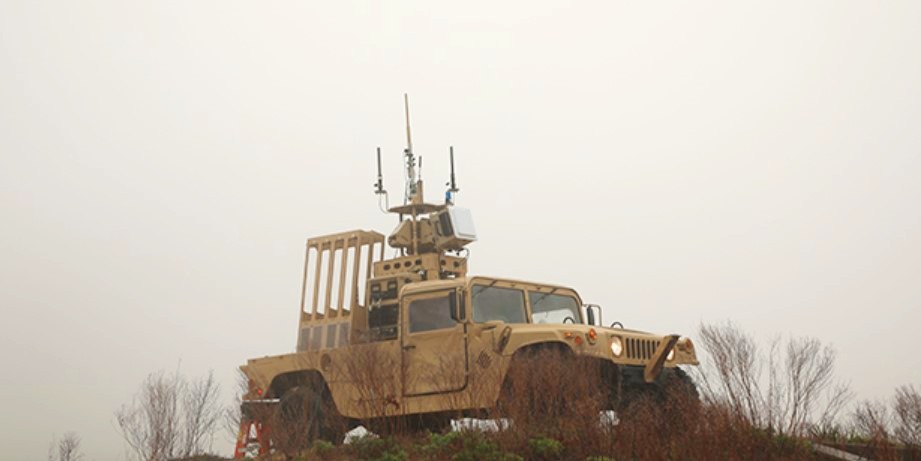
Avicola said that because its size, weight, and power requirements are designed to be small, it could be deployed inside of modular containers, aboard ships, or deployed around installations, including forward operating bases. Still, the system was primarily designed to be mobile and capable of operating on rough terrain.
“It can get jostled around, it can take bumps, and the sensor systems still operate and the system holds together,” Avicola said. “That was one of the goals at the beginning of the program, to build something that was [not only] mobile, but also mobile in the sense of unprepared roads.”
The press release on MFP that DARPA put out earlier this week mentioned only one interceptor specifically, the CUGAR – it’s unclear what this acronym stands for – for which Dynetics performed system integration. Dynetics ordered dual-rotor drones similar to those seen in DARPA’s recent demonstration last year in order to “develop new payload systems that will provide additional capabilities for customers in the defense and intelligence communities.” Avicola told us that another drone interceptor was tested in the MFP demonstrations, as well. This was the Lockheed Martin’s Mobile Radio Frequency-Integrated Unmanned Aerial Systems Suppressor, or MORFIUS.
“We took their existing product and basically contracted them to Dynetics to make some mods to integrate it with our system,” Avicola told us, adding that “They had a pretty interesting solution.”
Lockheed Martin describes MORFIUS as a tube-launched, “reusable, high-power microwave-based interceptor for C-UAS and C-swarm scenarios.” MORFIUS is based on the Agile-Launch Tactically Integrated Unmanned System-600 (ALTIUS-600) airframe designed by Area-I, a company that was recently acquired by Anduril Industries. It is claimed to be capable of defeating multiple threats simultaneously in a single attack using high-power microwaves (HPM). HPM are a form of directed energy weaponry which are capable of disrupting or even destroying electronics inside of drones or weapon systems, literally frying their circuitry from the inside out when powerful enough. It’s not immediately clear just how powerful the HPM system in the MORFIUS drones is, but the fact that a drone of its size can deploy a high-power microwave system at all is exciting on its own.

The ALTIUS-600 is an increasingly popular small drone design that can be adapted to various roles and that has been already test launched from a wide range of fixed-wing aircraft and helicopters, as well as from ground vehicles. Earlier this year, an XQ-58A Valkyrie unmanned aircraft notably launched an ALTIUS-600 drone from a Common Launch Tube system in its internal payload bay.
While the MFP system’s sensor suite uses X-band radar to detect and identify drones within its airspace, Avicola told us that the interceptors tested so far are also equipped with an onboard radar system developed by Fortem Technologies. After the master MFP unit assigns and directs an interceptor towards a target, the interceptor’s onboard radar then takes over in order to engage the target with its blasts of “strong stringy streamer” type effectors, as DARPA calls them. The interceptors tested for the MFP system so far are capable of defeating multiple threats in a single launch, Avicola told us. During the demonstrations at Eglin Air Force Base, the MFP unit was tested in engagements with multiple incoming threats. “It can take on more than one and did take on more than one at a time” in the demonstration, Avicola said.
After the MFP interceptors expend their effectors, they can land on their own where they can then be recovered. Once recovered, each reusable interceptor can be rearmed and loaded with new battery packs in less than twenty minutes. The interceptors, while designed to be low cost, are nevertheless built to be robust and durable. Avicola said one of their first prototypes successfully flew “hundreds of flights.”
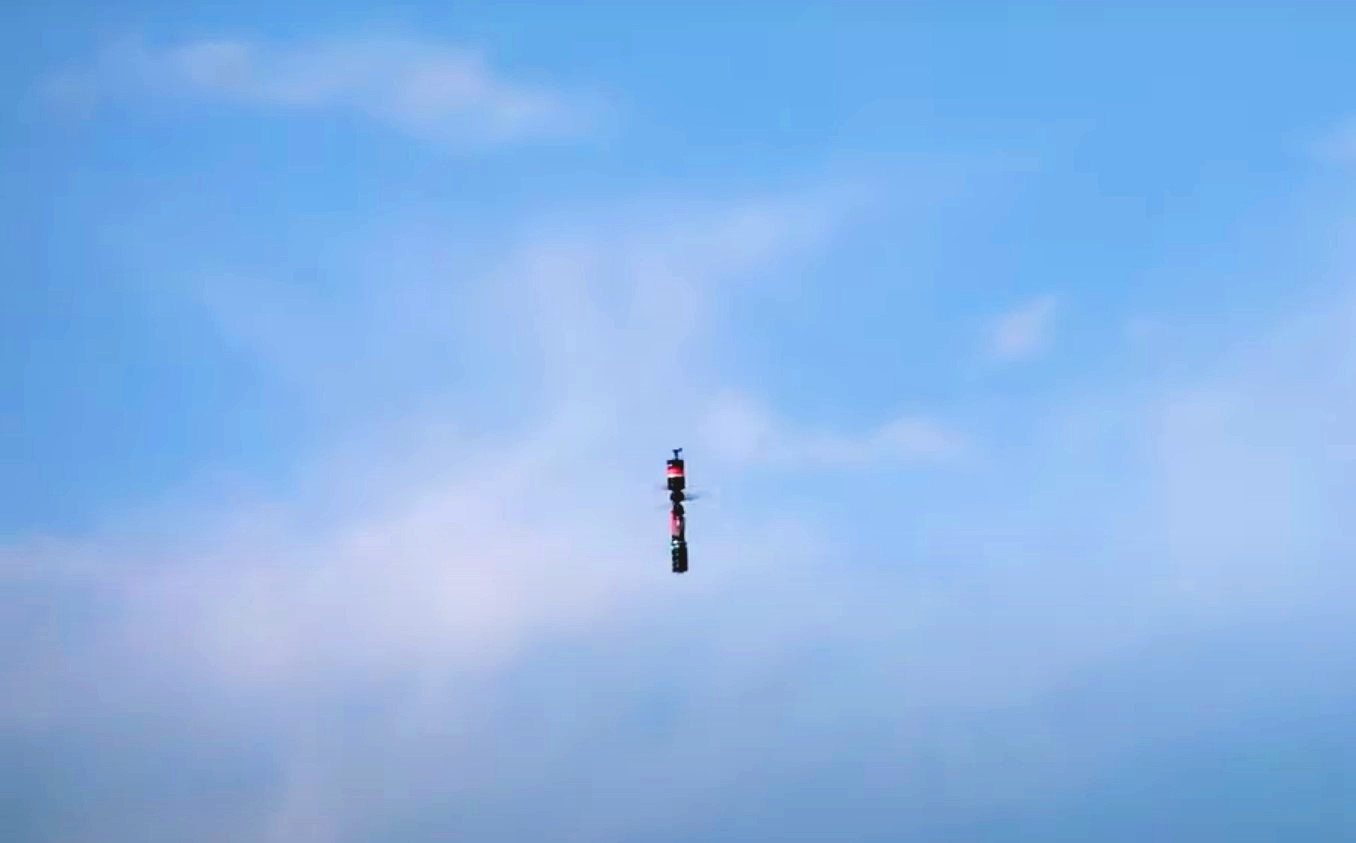
While DARPA isn’t releasing any specifics in terms of the system’s flight capabilities, Avicola did tell us that the Dynetics CUGAR interceptors are capable of staying in the air “on the order of tens of minutes.” Those figures are different for the MORFIUS interceptors, and any of the interceptors’ ranges would obviously be dependent on a wide range of factors in each use case. Avicola also added that the Dynetics interceptors can fly out to their maximum engagement range within “tens of seconds.” Once in the air, they have enough endurance to use all of their effectors “under most engagement timelines.”
“The endurance of those aircraft is designed to allow them to do a complete set of engagements over the course of a tube launch, and then land themselves,” Avicola said. Once an interceptor has defeated an incoming threat or multiple threats, it will then escort the vehicle from which it was launched until it runs out of battery power and lands. “What they aren’t really designed to do is to be long-term escorts.”
Even each individual interceptor is capable of having multiple engagements with hostile drones in a single launch, carrying multiple “effector tubes” full of what has been described as “pink goo” or “strong, stringy streamers” that can disable a hostile drone’s propulsion system.

The Dynetics interceptors’ propeller-clogging streamers can disable a wide variety of UAV systems, including fixed wing drones with both pusher and puller propellers and even quadcopters with shrouded rotors. “It’s pretty effective,” Avicola said. “The effector material is basically following the air flow. If the air flow is getting through the cage, then so is the effector material.”
Avicola said there is a size limit on how large of a drone the stringy effectors are capable of disabling, however. “If the vehicle gets so big that its motors can just overpower the effector material, then obviously we lose effectiveness.” The effector material is reported to be capable of bringing down both Group 1 and Group 2 drones as defined by the DOD. Group 1 UAVs include traditional quadcopter designs as well as hand-launched fixed wing aircraft up to 20lbs in weight and with a nominal altitude of around 1,200 ft above ground level (AGL). Group 2, meanwhile, consists of larger, mostly catapult-launched drones with weights up to 55lbs and that can reach nominal altitudes of up to 3,500ft AGL.
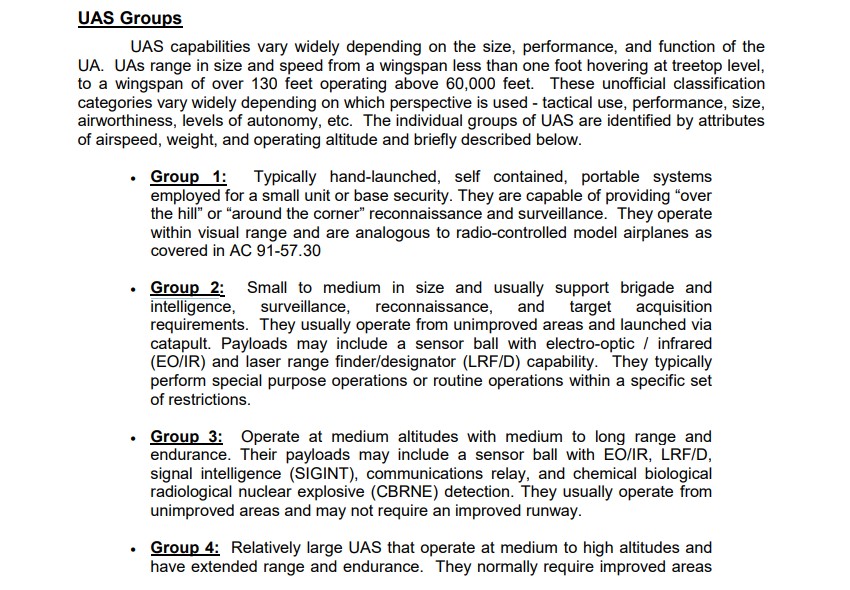
The exact capabilities of the Lockheed Martin MORFIUS in terms of which types of drones its HPM system can defeat or disrupt remain unknown, but the limitations of any one interceptor and its effectors or directed energy systems are exactly why DARPA and its DOD partners would want a system capable of carrying and launching multiple types of interceptors.
Avicola added that one of the goals of the DARPA program was to build a system that is flexible enough to use different types of interceptors as well as be combined with other CUAS solutions or sensors already at a higher technological readiness level to create a multi-layered drone defense. While the Lockheed Martin MORFIUS and Dynetics CUGAR interceptors were tested in the demonstration, the MFP system was designed specifically to be able to accommodate a variety of interceptor payloads. “Part of that was to demonstrate that we could command and control heterogeneous interceptors so that the system was flexible and does not necessarily have to use just this pair of interceptors,” Avicola said.
With the new Mobile Force Protection system, DARPA and the DOD are clearly going for a modular anti-drone approach that would allow them to add in new and expanded capabilities as UAV systems evolve, all unified by a common launch and command and control system. The Dynetics CUGAR and the Lockheed Martin MORFIUS are only two out of a wide range of drone interceptors available today, with more being developed all the time.
Given that the MORFIUS is based on the modular ALTIUS-600, which can also loiter for up to four hours and has a maximum range of hundreds of miles, these systems could theoretically provide counter-drone screening for prolonged periods of time overhead everything from convoys and forward operating bases.
It is becoming increasingly clear that a layered drone defense is what will be needed to protect U.S. forces who are increasingly under threat by small drone attacks. Short-range air defense capabilities are finally among the DOD’s top priorities, and to that end, systems like DARPA’s MFP could become more prevalent on the battlefield in the very near future.
Contact the author: Brett@TheDrive.com
